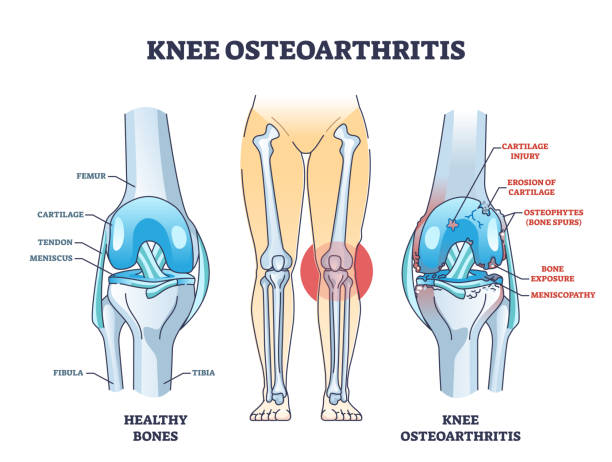How to Calculate Compensation for a Personal Injury Case?

Personal Injury Compensation: Maximizing Your Claim
Suffering an injury due to someone else’s negligence can have devastating consequences. Securing fair compensation requires evaluating multiple factors, including medical expenses, lost wages, and pain and suffering. Understanding these elements can help claimants seek an appropriate settlement and ensure financial stability during recovery.Key Components of Personal Injury Compensation
A personal injury claim generally includes several types of damages that contribute to the final compensation amount. The main categories include:- Medical Expenses: Covers hospital bills, medications, surgeries, and rehabilitation costs.
- Lost Wages: Compensates for income lost due to an inability to work.
- Pain and Suffering: Addresses emotional and physical distress caused by the injury.
- Property Damage: Includes repair or replacement costs if personal property was damaged.
- Loss of Earning Capacity: If the injury leads to a long-term disability affecting future income, this is considered in the claim.

Ready to connect with top legal professionals? Get immediate support— Call us at 877-550-8911.
Factors Affecting Compensation Amounts
Several key factors influence the final settlement amount in personal injury cases:- Injury Severity: More serious injuries, such as traumatic brain injuries or spinal damage, typically result in higher settlements.
- Medical Costs: Documentation of all treatment-related expenses is necessary to determine compensation.
- Impact on Employment: If the injury prevents a person from returning to work, lost wages and diminished future earning capacity must be calculated.
- Comparative Negligence: If the injured party shares fault, the compensation amount may be reduced.
- Jurisdictional Differences: Laws vary across states, affecting the potential settlement amount.
- Insurance Policy Limits: The at-fault party’s insurance coverage may place a cap on the payout.
Calculating Medical Expenses in Personal Injury Cases
Medical expenses often represent a significant portion of a personal injury claim. These costs include:- Emergency Room Visits: Immediate care received after the injury.
- Surgical Costs: Expenses for necessary operations.
- Rehabilitation and Therapy: Long-term treatments such as physical or occupational therapy.
- Prescription Medications: Costs of pain relief, antibiotics, and other necessary drugs.
- Future Medical Expenses: If ongoing care is required, these projected costs should be included in the claim.
Assessing Lost Wages and Future Earnings
When an injury affects a person’s ability to work, calculating lost wages and potential future earnings becomes crucial. This includes:- Determining Missed Income: Gathering pay stubs, tax returns, and employer statements.
- Considering Bonuses and Overtime: If the injured party regularly earned bonuses, they should be included.
- Projecting Future Earnings: If the injury impacts long-term career prospects, expert testimony may be needed.
- Adjusting for Inflation: Future earnings calculations should factor in economic changes.

Evaluating Pain and Suffering Damages
Unlike economic damages, pain and suffering compensation is subjective. There are two common methods for calculating these damages:- Multiplier Method: Total medical expenses are multiplied by a number (usually between 1.5 and 5) based on injury severity. Example: If medical expenses total $30,000 and a multiplier of 3 is applied, pain and suffering damages would be $90,000.
- Per Diem Method: Assigns a daily rate for suffering, multiplied by the number of days affected. Example: If a daily rate of $150 is used for 90 days, the total compensation would be $13,500.
The Role of Insurance Companies in Compensation Calculations
Insurance companies often seek to minimize payouts. They employ several tactics to reduce compensation amounts:- Disputing Medical Costs: Questioning whether treatments were necessary.
- Minimizing Pain and Suffering: Arguing for lower multipliers in damage calculations.
- Offering Quick, Low Settlements: Pressuring claimants into accepting less than they deserve.
- Blaming the Victim: Attempting to assign partial fault to reduce liability.
Using Legal Guidance to Maximize Compensation
Working with a personal injury attorney provides significant advantages:- Case Evaluation: Lawyers assess damages comprehensively.
- Evidence Collection: Gathering medical records, accident reports, and expert testimony.
- Negotiation Skills: Attorneys handle discussions with insurance companies to secure fair settlements.
- Litigation Support: If a fair settlement isn’t offered, an attorney can take the case to court.
Common Mistakes to Avoid When Calculating Compensation
To maximize compensation, avoid these errors:- Underestimating Medical Costs: Always include future treatment expenses.
- Failing to Document Evidence: Maintain records of all financial losses and medical visits.
- Accepting Early Settlements: Insurance companies often offer low settlements initially.
- Ignoring Pain and Suffering Damages: Subjective damages are just as important as economic losses.
FAQs
1. How long does it take to receive compensation in a personal injury case? The timeline varies based on case complexity, negotiations, and whether litigation is necessary. Cases can take weeks to years to resolve. 2. Can I claim compensation if I was partially at fault for my injury? Yes, but the amount may be reduced based on comparative negligence laws in your state. 3. What if the insurance company denies my claim? A personal injury attorney can challenge the denial and negotiate on your behalf, or take legal action if necessary. 4. Are there limits on pain and suffering damages? Some states impose caps on non-economic damages, particularly in medical malpractice cases. 5. Do I need a lawyer for my personal injury claim? While not mandatory, legal representation increases the chances of securing fair compensation by handling negotiations and legal complexities.Don’t wait to secure the legal representation you deserve. Visit Legal Case Review today for free quotes and tailored guidance, or call 877-550-8911 for immediate assistance.


